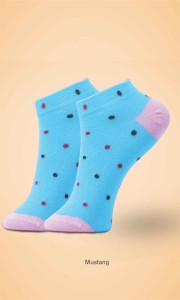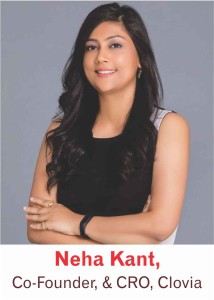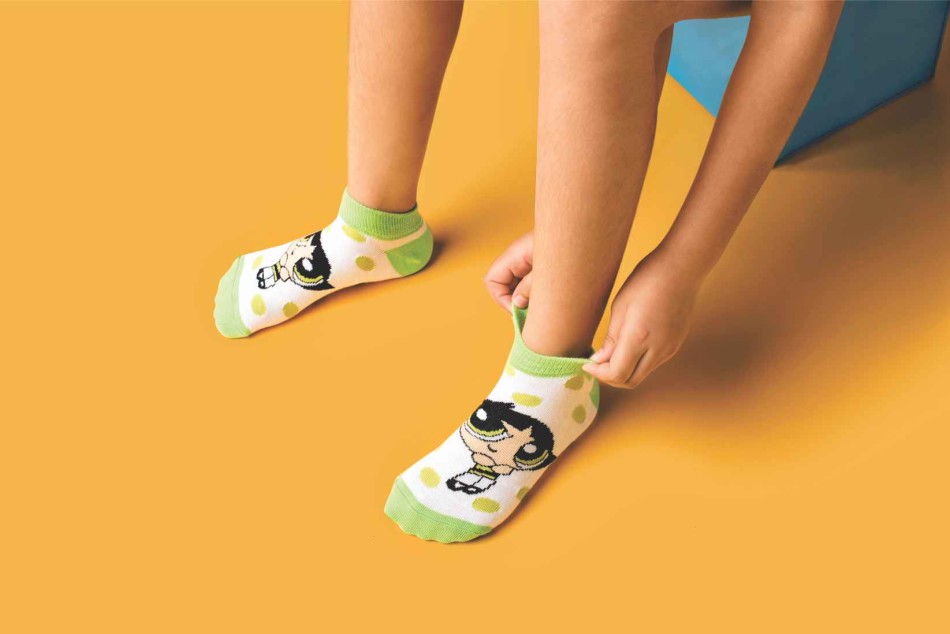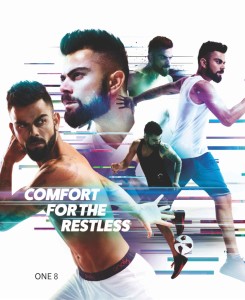Every business owner and every marketer incorporates a mix of advertising, marketing, public relations, and promotions in their marketing strategies. But how many employ licensing as a marketing and sales strategy? Not nearly enough, especially since global licensing and merchandising is a $262 billion-plus industry that provides brands an additional stream of revenue. And that’s why your business may want to consider licensing as a business model, either as a licensor or licensee.
Brand licensing is one of the most powerful tools to make the most out of an already established brand because of its ability to extend into products line beyond its core portfolio, reach new and existing target audience at new touchpoints and support and communicate brand equities.
License your growth
Taking a cue from the growing industry, actress Sunny Leone recently launched her innerwear brand ‘Infamous by Starstruck’. Leone says, “I’m really excited to launch ‘Infamous by Starstruck’. Infamous is for all kinds of women from all around the world.”
 Talking about the importance of brand licensing, Lubeina Shahpurwala, Co-founder and Partner, Mustang Enterprises, says, “Brand licensing works best in order to create a connect with the audience; in this case, fans. It helps in adding a dash of personality to your product and makes it more relatable to the consumer.”
Talking about the importance of brand licensing, Lubeina Shahpurwala, Co-founder and Partner, Mustang Enterprises, says, “Brand licensing works best in order to create a connect with the audience; in this case, fans. It helps in adding a dash of personality to your product and makes it more relatable to the consumer.”

For instance, Mustang had a special range of Garfield socks. Garfield is a lazy grouchy cat and we all know how it feels like to have to go to work on a Monday morning when all we want to do is pull the covers back and go to bed. Each character brings about a different set of emotions and values and that is the connection for the audience when referring to merchandising too.
 Echoing similar views, Neha Kant, Co-Founder, and CRO, Clovia, says, “Brand licensing is very lucrative as it allows two brands to merge together and create something that gives brand value to both the brands and their respective customers. We have observed in the recent past that the licensed and exclusive categories, be it cartoons, movies, TV series, etc receive quite a good traction and are a hit among the millennials.”
Echoing similar views, Neha Kant, Co-Founder, and CRO, Clovia, says, “Brand licensing is very lucrative as it allows two brands to merge together and create something that gives brand value to both the brands and their respective customers. We have observed in the recent past that the licensed and exclusive categories, be it cartoons, movies, TV series, etc receive quite a good traction and are a hit among the millennials.”
Kant cautions by saying, “Licensing can make or break the image of your brand. Two crucial aspects of licensing are the product/s that you’re creating and the brand/entity with which you’re collaborating. The new product should resonate with your target audience. Apart from this, licensing businesses need to be creative, thinking outside the box is critical, for instance, not limiting your merchandise to just the basics like a T-shirt.”
Agrees Gupta and says, “In character licensing, often we find that licensees take a character and put it on apparel, while you may still end up with a decent looking product. Licensing works best when the licensee is able to translate the DNA of the character on to its products and can combine it with the fashion and market trends.”
Besides, Artimas Fashions, a subsidiary of Lux Industries, holds the official licensee for Indian cricketer Virat Kohli’s One8 innerwear collection. One8 includes a wide range of briefs, trunks, vests, boxers, sleepwear, and socks. The brand intends to fill the gap of a significant product offering and marketing innovation in the premium innerwear domain.
Sharing his experience in licensing, Udit Kumar Todi, Senior Vice President, Lux Industries, says, “Over the last many years, we were approached by many global brands for the licensing opportunity. We wanted to be very sure on two accounts, first being the synergy that the licensed brand will have with our organisational competencies and secondly, how well as a corporate we regard the opportunity in terms of its potential size. One8 being Virat Kohli endorsed and promoted brand, we decided in its favour to complete our bouquet of brands.”
 Balenzia is yet another brand, which is making the most of licensing. Sharing his journey in licensing, Rahul Gupta, Director, Balenzia, says, “We started brand licensing in late 2016; today we have access to some very iconic licenses like Justice League, Powerpuff Girls, Dexter’s Laboratory, We Bare Bears, Johnny Bravo, and more. We have successfully used these licenses to come up with products targeting toddlers, kids and adults. While we initially thought that these licenses would help us strengthen our kids’ portfolio, the licenses have not only helped us expand it but have strengthened the adult fashion collection.”
Balenzia is yet another brand, which is making the most of licensing. Sharing his journey in licensing, Rahul Gupta, Director, Balenzia, says, “We started brand licensing in late 2016; today we have access to some very iconic licenses like Justice League, Powerpuff Girls, Dexter’s Laboratory, We Bare Bears, Johnny Bravo, and more. We have successfully used these licenses to come up with products targeting toddlers, kids and adults. While we initially thought that these licenses would help us strengthen our kids’ portfolio, the licenses have not only helped us expand it but have strengthened the adult fashion collection.”
Talking about the rationale behind entering licensing, Gupta states, “Socks as a category is very nascent in India. There aren’t many major players, and socks are often treated as commodities. It was important for us to break through the clutter and come up with starkly different products than what was currently in the market. This is where brand licensing helped us.”
“Socks in India have traditionally been overlooked as a fashion accessory, with very little differentiation between products and brands. As a brand, it was important for us to stand out, and hence we looked at licensing to come up with highly differentiated offerings. As a manufacturer of socks for more than 20 years, we used our learnings from the international markets, combined it with the fashion trends, and leveraged upon some truly iconic IPs, which has helped us break through the clutter. Our socks are different not just in terms of the designs, but also in the way they are packaged and marketed.” Gupta adds.
 In addition to this, Dixcy is having a licensee agreement with Levi’s. Talking about the association, Raghul Sikka, Executive Director, Dixcy Textiles, says, We wanted to partner with a brand with a strong equity. The brand would help us reach consumers’ faster in a more effective manner. Levi’s with its rich legacy and brand equity checks all of the above boxes.” “We have signed an agreement with Levi’s to manufacture and distribute their range of innerwear in India. We are very excited with this opportunity and look forward to a fruitful association with them,” he adds.
In addition to this, Dixcy is having a licensee agreement with Levi’s. Talking about the association, Raghul Sikka, Executive Director, Dixcy Textiles, says, We wanted to partner with a brand with a strong equity. The brand would help us reach consumers’ faster in a more effective manner. Levi’s with its rich legacy and brand equity checks all of the above boxes.” “We have signed an agreement with Levi’s to manufacture and distribute their range of innerwear in India. We are very excited with this opportunity and look forward to a fruitful association with them,” he adds.
For Sikka the way to succeed in licensing is to reach maximum customer touch points through the retailers and an effective distributor network.
In 2017, Oban Fashions Private Limited, a wholly-owned subsidiary of Rupa and Company, entered into a license agreement with Fruit of the Loom, INC, headquartered in Kentucky, a wholly-owned subsidiary of Berkshire Hathaway Company (a Warren Buffet Company).
Rupa and Company’s subsidiary has acquired the exclusive license from Fruit of the Loom, INC, to manufacture, distribute, advertise and sell innerwear and outerwear products for men, boys, women, girls and toddlers in India, under their brand name.
Fruit of the Loom is the second international brand, which will be produced and marketed in India by the Rupa Group after FCUK in 2016.
Meanwhile, PVH Corp, one of the world’s largest apparel companies and owner of iconic brands, including Calvin Klein, Tommy Hilfiger Van Heusen, Speedo, Warner’s and IZOD, has entered into a licensing agreement with NIKE, Inc. for the design, sourcing, marketing, and worldwide distribution of NIKE-branded men’s underwear.
“We are incredibly proud to be working with NIKE, as this is an opportunity for two great companies to build on each others’ strengths, making it a win-win for everyone, especially consumers,” says PVH’s Cheryl Abel-Hodges, President of Calvin Klein North America and The Underwear Group.
This doesn’t end here. British fashion retailer Marks & Spencer (M&S) plans to add more standalone lingerie stores from the existing six. The company, which has a joint venture with Reliance Retail Ltd, launched its inner-wear segment in India as an experiment in 2014.
This comes on the back of strong growth in India’s innerwear market, as demand for stylish, sensuous and premium quality lingerie continued to pique interest among female customers.
“Over the last two-three years now, lingerie has been our fastest-growing business until and I don’t see why that will slow down,” says James Munson, Managing Director, Marks & Spencer India. “We put six stores down as a trial…we have enough confidence to move ahead with them,” he adds.
“As a market, India is becoming more aligned with what we see in the West. The demand for lingerie is growing exponentially compared to other areas of our business. People are moving towards fashion-led products in innerwear as opposed to practical products,” he says.
How to succeed through licensing
The trick to succeed in licensing is associating yourself with the brands that have the same set of values as your own. “It’s about understanding your audience and their preferences and taking up brand licenses that will appeal to them. Whether it is targeting Peppa Pig socks at kids or Avenger socks at adults. The licenses need to make sense to your brand and what you have to offer,” opines Shahpurwala.
Sharing his thoughts, Udit Kumar Todi says, “The core idea is to explore synergies and potential opportunities.”
Gupta believes “It entirely depends on the licensees and how well they derive the DNA of the licensed IP. If done right, IPs can work wonders for licensees, depending on how they implement the license.”
Highlighting the challenges in socks as a category, Gupta says, “Using licenses on socks is far more difficult than on garments that allow printing. As socks are knitted- there are a lot of design limitations. Further, it was imperative for us to come up with designs that not only look good but also provide all-day comfort. After extensive R&D we have been able to come up with a range of Crew Socks, No Show Socks, and Ankle socks, which win smiles and hearts.”
To succeed in licensing it’s important to have the right licensee partner. Talking about the ideal profile of a licensee, Shahpurwala says, “The licensee should be able to make justice to the character; be in the form of socks, apparels or other merchandised accessories. If the intent and the approach is right, the portfolio doesn’t really matter.”
What’s in store?
The brands are offering a wide range of merchandise to their audience. Shahpurwala says, “Our primary focus has always been producing socks for people across age groups, and it will continue to be so. Apart from socks, we also dabble in other categories. We have a special range for kids along with accessories for new-born babies such as mittens, caps, bottle covers, etc. We also produce leg warmers that are not only stylish but also provide comfort during the winter season.”
“Currently, we do not have any plans to build on our existing categories. However, we continue to put in efforts to ensure we’re constantly innovating our existing product category,” he adds.
Talking about the pricing strategy, Saket Kumar Todi, Senior Vice President, Lux Industries, says, “One8 innerwear is being strategized to be established in the Rs 5500 crore mid and premium men’s innerwear category. The brand will be retailed at ‘premium’ and ‘super-premium’ price points.”
“Our price is 300 INR onwards.”
Talking about the price range, Sikka says, “Our price points range from INR I50 in the lower end to INR 400. By the year end, we plan to cover 8,000 outlets.”
While sharing his thoughts on how to zero upon the target group for the licensed range, Gupta says, “We are targeting the fashion-conscious urban Indians via the licensed range. Not restricting these IPs to kids, we have tried to cater to a wider age group through our collections.”
Says Kant, “We are putting Powerpuff Graphics on a range of new-age silhouettes mixing nostalgia with the recent collection. We think it will work fabulously.”
Talking about the target audience, Kant says, “There isn’t a fixed TG for this range, however, while cartoons are one of the main highlights of everyone’s childhood, this range would specifically strike a chord with every 90s kid, taking them on a nostalgic ride down the memory lane.”
She further shares the price point, “This licensed category, which includes nightwear (nighties and night suits) and briefs begins with a starting range of INR 599 and goes up to INR 1999. It is available on our online portal www.clovia.com and will soon be available at our offline stores as well. We will continue to license brands that connect with our audience with graphics and trends that continue to appeal to them.”
Road ahead
The brands have great plans to expand the range of merchandise, to innovate and to go digital. “While we are strong on the retail front with over 40 distributors spread across India, our immediate focus is to strengthen our presence on digital. We are present on third party e-commerce platforms, but creating our own platform will help drive more sales and help in creating customised experiences for our customers,” Shahpurwala says.
“We as a corporate are keen to explore all possibilities of licensing that comes to us. We look forward to establish brands across various categories and price points,” says Saket Kumar Todi. “With socks gaining more visibility in the fashion space off late, we plan to provide customers with more fashion and lifestyle-centric products. The idea is to constantly innovate and up our game, in tandem with the demands and trends of the industry. We are continuously striving to provide our customers with unique personal experiences and provide them with products that fit their needs, thus creating happiness one sock at a time,” Shahpurwala adds.
“As we primarily have character licenses, to sustain the licensing model, we plan to keep reinventing the product in terms of design and functionality to avoid license/character fatigue. The licenses that we work with are timeless and are refreshed in terms of artworks/designs periodically; hence, they ensure a healthy product life cycle.
Further, we plan to evolve the product constantly to match the trends and consumer needs. While we are not currently planning any category expansion, we would be looking to expand our licensed product portfolio,” adds Gupta.
Conclusion:
Clearly, many brands and personalities – be it famous celebrities, established or other brands – have incorporated brand licensing as a powerful tool in the marketing mix as a licensor or a licensee. It is also the way forward for others who are yet to implement it in their marketing strategy. Licensing allows licensor and licensee to merge together and create something that gives brand value to both the brands and their respective customers. However, in a bid to succeed through licensing your product should resonate with your target audience and the licensing businesses need to be creative to win in the market.


















